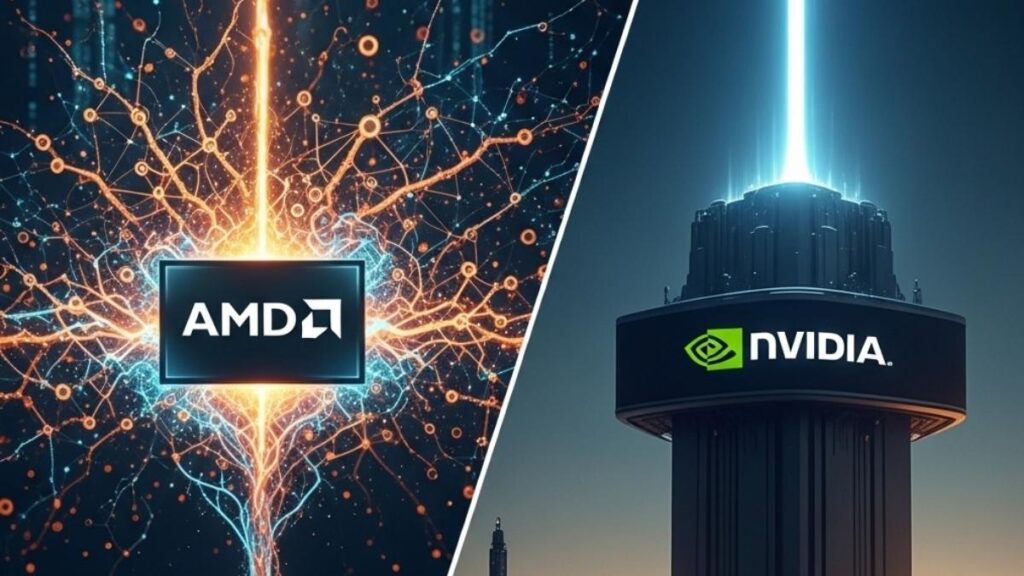This month, both NVIDIA and Qualcomm had major media and analyst events. NVIDIA did its event virtually, while Qualcomm staged its event in Hawaii which was also live streamed. Both companies are chasing autonomous car opportunities aggressively, but do not offer equivalent solutions. And both companies have unique advantages which are not mutually exclusive, suggesting the best implementation might be a blend of the two companies’ offerings, not an exclusive use of either.
Let us contrast Qualcomm’s and NVIDIA’s work to define the future of autonomous cars and eventually autonomous robots.
NVIDIA: The one stop shop
What defines NVIDIA is its soup-to-nuts approach to this opportunity. Not only does it have both training and inference solutions for robotic autonomy, but NVIDIA is also heavily invested in simulation which has it currently in the lead with robotics—a claim currently highlighted at the heavily automated BMW manufacturing plant. An early adopter of the metaverse with its own metaverse tool set under the brand name Omniverse, NVIDIA’s autonomous car solution is particularly attractive to smaller car companies that lack the resources to develop their own proprietary program. The less a company knows about autonomous cars, the more attractive NVIDIA’s solution is because it can turn novices into experts.
Qualcomm: The do-it-yourself approach
Qualcomm’s approach is far less comprehensive, and it has not yet embraced robotics as fully as NVIDIA. However, Qualcomm knows how to handle the basics, is an expert with networking, and can better integrate smartphones into their solution (all areas that car companies aren’t particularly good at). Plus, the implementation is more on the inference than the training side. This makes Qualcomm far more attractive to larger companies like GM which currently has the best on-road autonomous system in market, and ironically, BMW, which has similar scale.
It is interesting to note that on the smartphone side where Qualcomm is best known, it is more of a soup-to-nuts company but lacks both the depth and breadth of NVIDIA’s offering. This limited approach is more attractive to larger car companies that want stronger differentiators and want to own more of their solution. While NVIDIA stands out in terms of the completeness of its solution, Qualcomm stands out in terms of its smartphone experience which could be an interesting differentiator as car companies move to smartphones as keys and begin integrating smartphones and cars with remote cloud services more intimately.
A possible blended solution
BMW’s use of Qualcomm in cars and NVIDIA in factories highlights the unique advantages both companies have. BMW knows little about robotics and thus needs NVIDIA’s help to craft a comprehensive solution, but it knows a lot about cars, making Qualcomm’s limited offering more attractive because it does not make what BMW already has redundant. I doubt BMW will be alone with this distinction because every car company is experiencing both parts and labor shortage problems which is forcing a much higher level of factory automation.
Both companies can address the growing need for enhanced in-car entertainment, but Qualcomm can do a better job of integrating smartphones and cars, while NVIDIA should be better at helping to find and fill technology gaps through simulation.
And using one company, as BMW highlighted, does not preclude using the other, underpinning the possibility that a blend of the technologies might provide the best overall experience for the driver until this technology fully matures in the 2030s.
Wrapping up
In the early phases of a market there is little focus on competition because the market is far from being saturated. In this phase, the best approach is to engage as many of the leading vendors as possible and allow for flexibility between solutions as those solutions mature because you want to keep your options open, if possible, so the solutions can mature. In addition, there may be elements of NVIDIA’s solution, like simulation, that you will need, and elements of Qualcomm’s solution, like connectivity and smartphone integration, that you will need, as well, making the blended approach the best until we have more parity between the two offerings. Providers are more likely to cooperate rather than compete at this phase because they need to collectively make a market before they can fight over the result.
My concern for this segment is that demand for autonomous driving is not anywhere near where it needs to be and too many drivers still distrust the technology. This distrust results from a combination of the highly publicized Tesla Autopilot crashes and the limitations of the technology that is currently in market. If the industry does not fix the demand problem, it will not really matter whether NVIDIA or Qualcomm provides a better solution because there will be few people that want either. And this problem is why it is likely that Qualcomm, NVIDIA, and even Intel may collaborate more than compete in the near term.
- The HP OmniBook X Flip 2-in-1 16-Inch: Your New Digital Swiss Army Knife (Now in Glorious Atmospheric Blue) - June 25, 2025
- The Open AI Avalanche: Why AMD’s Collaborative Spirit Is Outmaneuvering NVIDIA’s Empire - June 22, 2025
- Lenovo Embraces OpenBMC: A Step Towards Greater Transparency and Control in the Data Center - June 17, 2025



